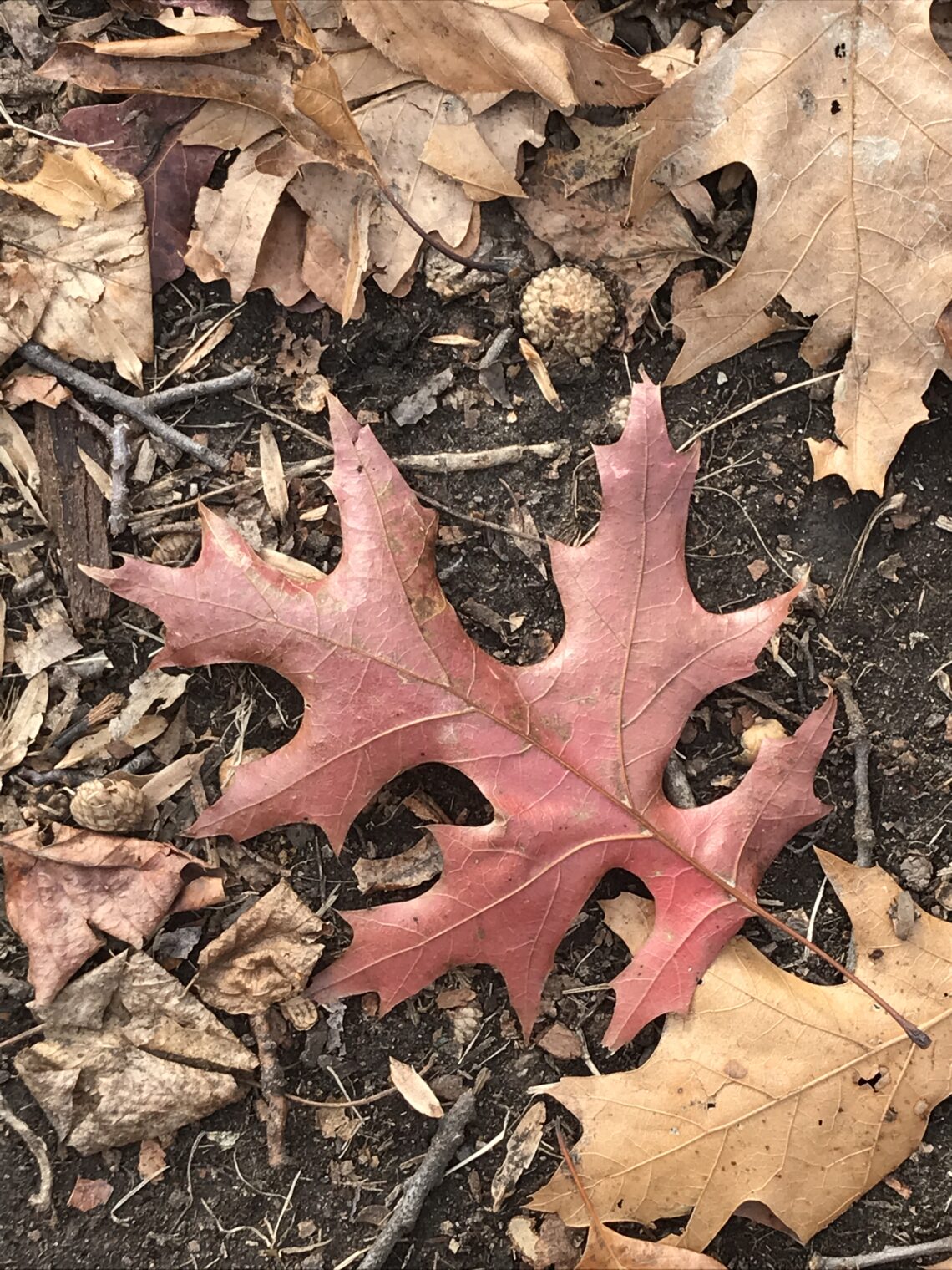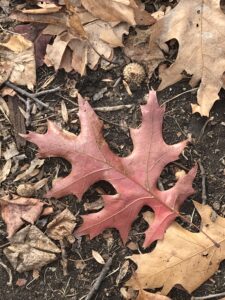
Coronavirus Tidbits #98 11/25/20
Quick links
News Diagnostics Drugs Devices Epidemiology/Infection control Tips Politics Feel good du jour Comic relief Perspective/Poem Bits of beauty
Announcements:
First, there is now a Resources Page here for the most commonly asked questions I’m getting.
Tidbits will likely be a bit shorter and a little less frequent for the next little bit. I have been immersed in it and I need to spend a little more time on self-care, which for me means seeing the spring flowers emerge and digging in the dirt. Pesach is always a bit rough anyway, so I will turn to more nature.
Happy to continue to answer your questions/concerns as best I can, so don’t be shy about that.
News

Trump has not met with his coronavirus task force in at least 5 months, according to a senior administration official, and rarely reads daily reports prepared for him by task force coordinator Deborah Birx, MD. His administration has largely been ignoring the pandemic, hindering efforts to curtail it before an expected winter surge,according to the Washington Post.
~ ~ ~
Hospitals in half the states are facing a massive staffing shortage as Covid-19 surges
Intensive care unit nurses, who typically oversee no more than two patients at a time, are now being pushed to care for six to eight patients to make up for the shortfall in parts of Texas.
States that sent doctors and nurses to New York at the beginning of the pandemic now have no one to turn to as hospitals across the country experience the same problem.
There has been an average of 157,318 new cases per day over the past week, according to the STAT Covid-19 Tracker — 74% more than two weeks ago. The situation is exacerbated as staff get sick with coronavirus themselves, or else have to quarantine after exposure.
One rural hospital in Texas is struggling with 30% of staff nurses out of commission because of infection with or exposure to Covid-19…and more than 1,000 staff from the Mayo Clinic were out
~ ~ ~
‘Essential workers’ likely to get earlier access to Covid-19 vaccine
Essential workers include people who work in meat packing plants and other food processing facilities, in municipal wastewater management operations, and in transport. It also includes police and firefighters and, in the current iteration of the ACIP’s plan, teachers. The CDC estimates there are roughly 87 million people in jobs designated as essential services.
Though people from racial and ethnic minorities make up 40% of the American population, they account for nearly 60% of Covid cases and 50% of the Covid deaths in this country, according to CDC data. Agency data also show that Black people make up about 38% of essential workers, compared to 27% for both white and Hispanic people. Black people also more commonly work in jobs that expose them to SARS-CoV-2, the virus that causes Covid-19.
~ ~ ~
How the Covid-19 pandemic has been curtailed in Cherokee Nation
With a mask mandate in place since spring, free drive-through testing, hospitals well-stocked with PPE, and a small army of public health officers fully supported by their chief, the Cherokee Nation has been able to curtail its Covid-19 case and death rates even as those numbers surge in surrounding Oklahoma,
CDC “reports that American Indian and Alaskan Native populations have case rates 3.5 times higher than that of white individuals. The Navajo Nation, where Covid testing, PPE, and sometimes even running water are in short supply, has seen nearly 13,000 cases and 602 deaths among its roughly 170,000 citizens. The Cherokee Nation, with about 140,000 citizens on its reservation in northeastern Oklahoma, has reported just over 4,000 cases and 33 deaths.
https://www.statnews.com/2020/11/17/how-covid19-has-been-curtailed-in-cherokee-nation/
Diagnostics:
still an incredible, negligent lack of testing…yet
Authorities curtailed an outbreak of COVID-19 in Qingdao, China, quickly and without a lockdown. Key to their strategy was mass testing. (New England Journal of Medicine).
After an outbreak of 3 patients, in under a week “a total of 10.9 million people had been tested, and another 9 cases related to the initial cluster were identified using pooled testing, for a total of 12 cases. All testing has now been completed, and no additional cases were found. The outbreak was controlled without a lockdown. Residents were required to wear masks; they were allowed to move freely within the city during the testing process, but they had to have a negative test result before they could use public transportation.
Drugs:
Monoclonal antibodies – Regeneron
FDA issued an emergency use authorization (EUA) for two monoclonal antibodies (casirivimab and imdevimab) to be administered together for the treatment of mild to moderate #COVID19 in high-risk adults and pediatric patients age 12 and older.
They were shown to reduce COVID-19-related hospitalization or emergency room visits in patients at high risk– hospitalizations and emergency room visits occurred in 3% of casirivimab and imdevimab-treated patients on average compared to 9% in placebo-treated patients. Casirivimab and imdevimab are not authorized for patients who are hospitalized due to COVID-19 or require oxygen therapy due to COVID-19.
~ ~ ~
Lilly’s bamlanivimab use restricted due to limited supply.
The federal government has paid $1,250 per dose for 300,000 doses of bamlanivimab, which experts estimate may only be enough for one weeks’ worth of Americans becoming infected, based on the FDA label identifying appropriate patients.
The FDA authorized bamlanivimab for patients over age 65 recently diagnosed with mild-to-moderate COVID-19 and patients with obesity, diabetes, or another risk factor. The agency said the drug should not be used in hospitalized patients.
“For patients at high risk for disease progression, hospitalisations and emergency room visits occurred in 3% of bamlanivimab treated patients on average compared to 10% in placebo treated patients,”
https://www.bmj.com/content/371/bmj.m4362
~ ~ ~
FDA Gives EUA to Lilly’s Baricitinib and Remdesivir Combo for Severe COVID-19
Baricitinib (Olumiant) is an oral Janus kinase (JAK) inhibitor, in combination with intravenous remdesivir (Veklury) to treat hospitalized patients with severe COVID-19, the agency said on Thursday.
The combination received emergency use authorization (EUA) for patients ages 2 and older who require supplemental oxygen, mechanical ventilation, or extracorporeal membrane oxygenation, the FDA said in a statement.
Both drugs already have full approval from the FDA for other indications. Baricitinib was approved in 2018 for moderate to severe rheumatoid arthritis, and remdesivir was recently approved to treat hospitalized COVID-19 patients
(It is a little surprising that EUA was not for Baricitinib alone, given that WHO did not find Remdesivir of value. IDSA still stands by its use)
https://www.medpagetoday.com/infectiousdisease/covid19/89803?
Here is the meager data and not very dramatic results:
Summary of Key Efficacy and Safety Findings
- Patients treated with baricitinib in combination with remdesivir had a significant reduction in median time to recovery from 8 to 7 days (12.5% improvement) compared to remdesivir [hazard ratio: 1.15; 95% CI 1.00, 1.31; p=0.047].
- Patients treated with baricitinib in combination with remdesivir were more likely to have a better clinical status at Day 15 compared to patients treated with remdesivir [odds ratio: 1.26; 95% CI 1.01, 1.57; p=0.044].
- The proportion of patients who progressed to ventilation (non-invasive or invasive) or died by Day 29 was lower in baricitinib in combination with remdesivir (23%) compared to remdesivir (28%) [odds ratio: 0.74; 95% CI 0.56, 0.99; p=0.039].
- The proportion of patients who died by Day 29 was 4.7% for baricitinib in combination with remdesivir vs. 7.1% for remdesivir, a relative reduction of 35% [Kaplan Meier estimated difference in Day 29 probability of mortality: -2.6% (95% CI -5.8%, 0.5%)].
- Adverse events and serious adverse events were reported in 41% and 15% of patients treated with baricitinib in combination with remdesivir, respectively, vs. 48% and 20% in patients treated with remdesivir. Infections and venous thromboembolism (VTE) occurred in 6% and 4% of patients treated with baricitinib in combination with remdesivir, respectively, vs. 10% and 3% of patients treated with remdesivir. No new safety signals were identified for baricitinib-treated patients.
~ ~ ~
Good overview of the 3 leading vaccine candidates (free coverage):
https://www.washingtonpost.com/health/2020/11/17/covid-vaccines-what-you-need-to-know/?arc404=true
~ ~ ~
AstraZeneca says COVID-19 vaccine has average efficacy of 70%
Nov. 23 (UPI) — AstraZeneca announced Monday that a vaccine it’s been developing with Oxford University has shown to be “highly effective” at preventing COVID-19, with an average efficacy of 70%.
The AZD1222 vaccine candidate has resulted in zero hospitalizations and no severe cases of the coronavirus among volunteers, it said.
AstraZeneca said the vaccine showed different efficacy in different dosing regimens. It was 62% effective when two full doses of the vaccine were administered a month apart, and 90% when a half-dose was followed by a full dose after a month. (? why this happened? There is an attempted explanation in https://www.statnews.com/2020/11/23/astrazeneca-covid-19-vaccine-is-70-effective-on-average-early-data-show/) but I don’t really get it.)
“These findings show that we have an effective vaccine that will save lives,” Andrew Pollard, chief investigator of the Oxford Vaccine Trial in England, said in a statement. Some 23,000 people have participated so far in the two-dose vaccine trials, which have been conducted in the United States, Japan, Russia, South Africa, Kenya and Latin America. Other trials are planned in Europe and Asia and AstraZeneca expects to ultimately enroll 60,000 volunteers.
AZD1222’s advantage is that, unlike its rivals, it does not need to be stored at extremely cold temperatures for storage and transport. This would make it particularly easy to distribute among developing countries…. the vaccine can be stored at fridge temperatures, so it can be distributed around the world using the normal immunization distribution system.”
Here is an excellent article by Hilda Bastian ripping the AZ trial:
https://www.wired.com/story/the-astrazeneca-covid-vaccine-data-isnt-up-to-snuff/
~ ~ ~
Pfizer vaccine and its German collaborator BioNTech applied for emergency use authorization for their COVID-19 vaccine from the Food and Drug Administration.
Moderna is expected to send in its application for its vaccine one to two weeks later…
~ ~ ~
Vaccine hesitancy
In all, 58% of adults aged 50 to 80 say they are somewhat or very likely to get vaccinated to prevent COVID-19, according to new results from the National Poll on Healthy Aging from the University of Michigan.
That number went up to 66% when the poll team asked the question a different way: 20% said they’d want to get vaccinated right away when vaccines become available, but 46% said they’d rather wait for others to get vaccinated first before doing it themselves.
Women, people of color, people between 50 and 64 years old, and those with lower incomes and education levels were less likely to say they’d seek vaccination in general. Only 40% of older adults who are Black, and 51% of those who are Hispanic, said they are somewhat or very likely to get vaccinated, despite the greater risk of hospitalization and death for members of these groups if they develop COVID-19.
https://www.eurekalert.org/
~ ~ ~
IDSA continues to recommend remdesivir for COVID-19, departing from WHO
despite a guideline from WHO last week that recommended against its use in any hospitalized patients
… the reason for maintaining the recommendation for remdesivir was that results from the ACCT-1 trial showed an improved time to recovery in hospitalized patients.
~ ~ ~
Why emergency COVID-vaccine approvals (EUAs) pose a dilemma for scientists
Once a vaccine is granted emergency approval, there is pressure on developers to offer the immunization to trial participants who received a placebo. But if too many people cross over to the vaccine group, the companies might not have enough data to establish long-term outcomes, such as safety, how long vaccine protection lasts and whether the jab prevents infection or just the disease.
(This is part of why some suggest “expanded access” rather than an EUA)
https://www.nature.com/articles/d41586-020-03219-y
~ ~ ~
Devices:
When to replace a face mask:
If it is loose.
If you can see through it or it is torn.
If you have to keep adjusting it.
Moving from chilly outdoor environments into cozy indoor settings makes it easy to sweat through your mask, as does wearing multiple layers. You’re advised to always swap a wet mask for a dry one.
https://www.inquirer.com/philly-tips/fabric-face-masks-replace-rip-worn-20201118.html
~ ~ ~
AI system bests radiologists in spotting COVID-19 in lungs
DeepCOVID-XR analyzed each of 300 randomly selected test images in about 18 minutes, versus the 2.5 to 3.5 hours of individual radiologists. DeepCOVID-XR was 82% accurate, compared with the radiologists’ 76% to 81% individually and 81% as a team.
Study coauthor said in the release that the team is not trying to replace COVID-19 testing with the AI platform (which can’t confirm a diagnosis) but rather to shave hours or even days from time to diagnosis and isolation so the patient does not spread the virus to healthcare workers or other patients. “It would take seconds for our system to screen a patient and determine if that patient needs to be isolated,” he said.
Epidemiology/Infection control:
Review Confirms COVID-19 Patients Most Infectious in First Week
— But no live virus detected after day 9, a systematic review and meta-analysis found
https://www.medpagetoday.com/infectiousdisease/covid19/89798?
~ ~ ~
The virus does not care whether it's the workers at meatpacking plants or the prisoners or prison staff or folks who live or work at nursing homes who are "most affected" or "most at risk" from COVID.
— Rachel Maddow MSNBC (@maddow) November 23, 2020
It gets a foothold anywhere, it affects all of us:https://t.co/byf6Lx394W
~ ~ ~
4 months after acute recovery, there are still signs of persistent viral replication in the GI tract in some former COVID-19 patients.
— ice9 (@__ice9) November 6, 2020
Interesting development. https://t.co/ASyaMyevmd
~ ~ ~
Frequent, rapid testing could cripple COVID within weeks, study shows
Research shows test turnaround-time, frequency far more important than sensitivity in curbing spread
The researchers scoured available literature on how viral load climbs and falls inside the body during infection, when people tend to experience symptoms, and when they become contagious.
They then used mathematical modeling to forecast the impact of screening with different kinds of tests on three hypothetical scenarios: in 10,000 individuals; in a university-type setting of 20,000 people; and in a city of 8.4 million.
When it came to curbing spread, they found that frequency and turnaround time are much more important than test sensitivity.
The study also demonstrates the power of frequent testing in shortening the pandemic and saving lives.
In one scenario, in which 4% of individuals in a city were already infected, rapid testing three out of four people every three days reduced the number ultimately infected by 88% and was “sufficient to drive the epidemic toward extinction within six weeks.”
In the past, federal regulators and the public have been reluctant to embrace rapid tests out of concern that they may miss cases early in infection. But, in reality, an infected person can go from 5,000 particles to 1 million viral RNA copies in 18 to 24 hours, said Parker.
“There is a very short window, early in infection, in which the PCR will detect the virus but something like an antigen or LAMP test won’t,” Parker said.
And during that time, the person often isn’t contagious, he said.
“These rapid tests are contagiousness tests,” said senior co-author Dr. Michael Mina, an assistant professor of epidemiology at the Harvard T.H. Chan School of Public Health. “They are extremely effective in detecting COVID-19 when people are contagious.”
They are also affordable, he added. The rapid tests can cost as little as $1 each and return results in 15 minutes. Some PCR tests can take several days.
“It’s time to shift the mentality around testing from thinking of a COVID test as something you get when you think you are sick to thinking of it as a vital tool to break transmission chains and keep the economy open,” Larremore said.
https://www.eurekalert.org/pub_releases/2020-11/uoca-frt112020.php
Tips, general reading for public:
StayAtHome
Wash your hands.
Rinse and repeat.
Despite around-the-clock production, the popular disinfectant (and go-to coronavirus killer) Lysol continues to disappear from retail shelves almost as soon as it shows up. (Bloomberg)
Note that a 1:10 bleach-to-water dilution works, is cheap, and is readily available. It should be made up fresh daily.
~ ~ ~
Guide to the Classics: Boccaccio's Decameron, a masterpiece of plague and resilience via @TC_Africa https://t.co/AZnlOk2PPZ
— Madhu⚕️ Singh, MD (@thinkalot) November 24, 2020
Politics:
More about Tony Blinken, nominated for secretary of state:
Please enjoy a brief introduction to Tony Blinken: https://t.co/EJsAvTwqgp pic.twitter.com/cwX3KhtkiE
— Mimi ゚* ✧・゚゚ is phone banking into Georgia (@mimirose101) November 23, 2020
~ ~ ~
Still no answer to this question: Who paid off Brett Kavanaugh’s $92,000 country club fees plus his $200,000 credit card debt plus his $1.2 million mortgage, and purchased themselves a SCOTUS seat?
— Andrea Junker ® (@Strandjunker) November 22, 2020
~ ~ ~
The Republican Party in one image: pic.twitter.com/6S3mgNFgUG
— Ben Yahr (@benyahr) November 22, 2020
~ ~ ~
Yes. You read that statistic. Just as cold weather hits and #COVID19 cases skyrocket, eviction cases in MA are up 632% in just TWO WEEKS!
— Josh Barocas, MD (@jabarocas) November 23, 2020
Our ability to recover from this pandemic depends on how we treat vulnerable ppl.
So… https://t.co/E23FxnbU8k
~ ~ ~
Feel good du jour:
"It's working!" Check out the critters big and small who are using Utah's first wildlife overpass to cross Interstate 80. The @UtahDWR shared this video on Thursday. pic.twitter.com/H7d896eiYs
— KUTV2news (@KUTV2News) November 21, 2020
~ ~ ~
a. Ginger takes at least 4-6 months to mature underground but trimming the greens off helps hasten its maturity.
— United Farm Workers (@UFWupdates) November 22, 2020
b. If you’ve never seen pineapples grow, google it— they look wild. Here’s a video of a fascinating teamwork approach to the harvest.
pic.twitter.com/q6j4oB66ln
Comic relief:
https://twitter.com/GhostAnneBoleyn/status/1330173247057498113?s=20
~ ~ ~
I spend a ton of money on bird seed and it's totally worth it just to watch the quail running across my driveway. pic.twitter.com/I09mMMFN9I
— Wendy (@geococcyxcal) November 22, 2020
~ ~ ~
Perspective/Poem
A drawing a day.
— Edward Carey (@EdwardCarey70) November 21, 2020
Day 248. Voltaire. “Those who make you believe absurdities, can make you commit atrocities.” (Born OTD in Paris, France in 1694.) pic.twitter.com/X8TLUtEkpO
~ ~ ~
This gives me such hope for the Biden administration beginning to restore the US
In the spring of 1945, in a Nazi slave labor camp 50 miles from Dachau, convict No. B-1713 heard powerful explosions pierce the night air.
— Andrei Cherny (@AndreiCherny) November 23, 2020
The guards said the "enemy" was advancing and herded the prisoners together to be marched back to Dachau.
They marched for most of three days. At dawn, on the third day, a squadron of Allied fighter planes, coming upon what they thought was a column of Nazi troops, swooped low to strafe them.
As the SS-troops hit the dirt and began firing their machine guns, one of the prisoners shouted “run for it!” A group of them ran towards the forest for the trees. The explosions caught most of them, but six, including convict No. B-1713, made made it into the forest alive.
He hid in the hayloft of an abandoned Bavarian barn. Days passed. And then one afternoon he peaked through a crack in the wooded slats and saw a huge tank leading an armored convoy heading toward him.
He looked for the swastika on its side. Instead, he saw a five-pointed white star. He ran from the barn, charging toward the tank, screaming and waving his arms.
From the tank’s hatch emerged CPL Bill Ellington, of the all-Black 761st, son of a slave. B-1713, who had lost his family and survived four years in the camps, fell to his knees before Ellington and repeated the few English words he knew: God Bless America! God Bless America!
Ellington lifted him into the hatch–and into freedom. Convict No. B-173 was named Samuel Pisar. He became an American citizen, a successful lawyer. His stepson, Tony Blinken (@ABlinken), will become America’s next Secretary of State.
In 2017, Blinken wrote “What We Lose by Barring Refugees”
(Recounting the tank incident…) “That’s who we are. That’s what America represents to the world, however imperfectly. And that’s what we now risk losing, piece by piece, with an administration that would keep that tank hatch slammed shut.”
Bits of beauty:






